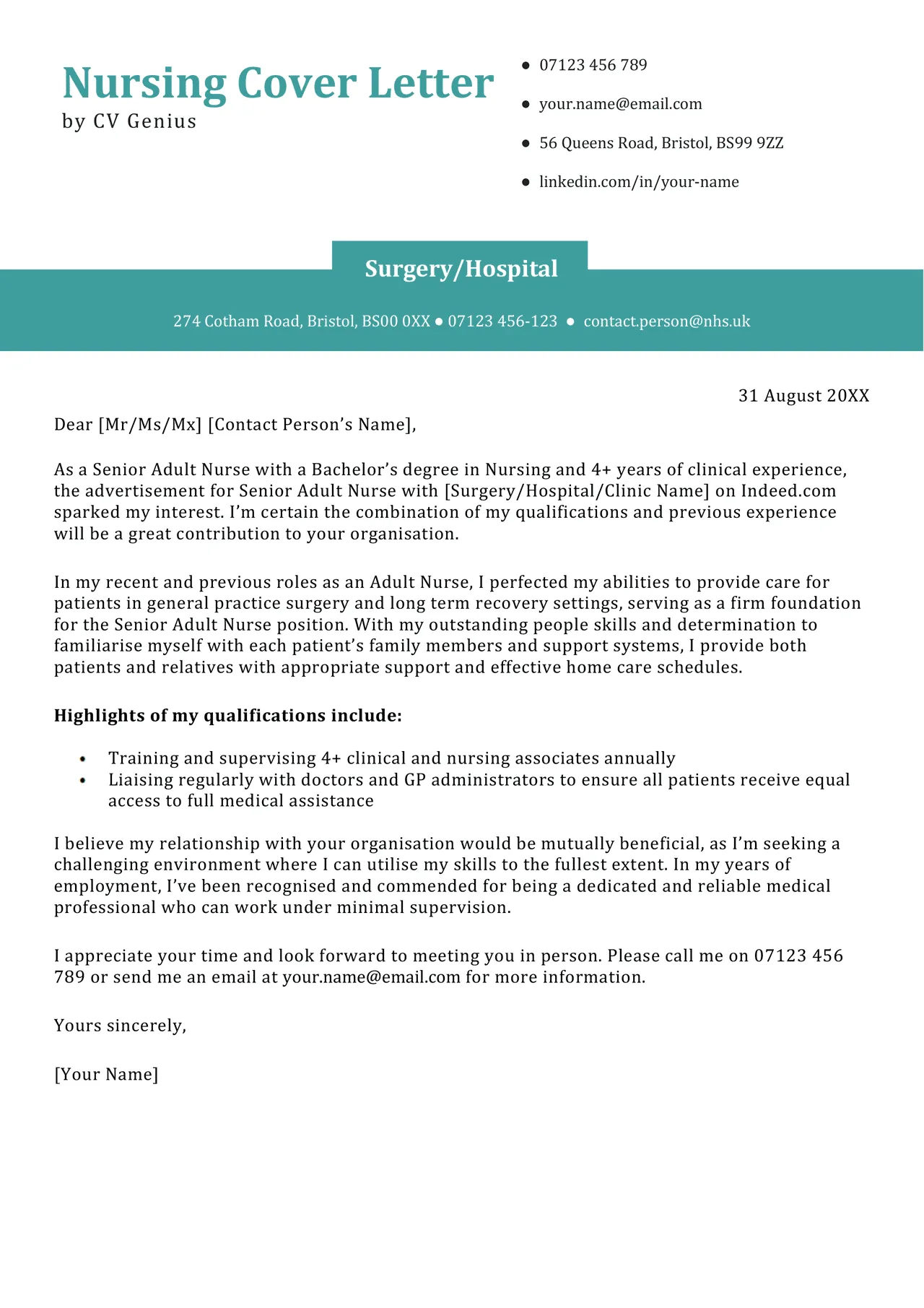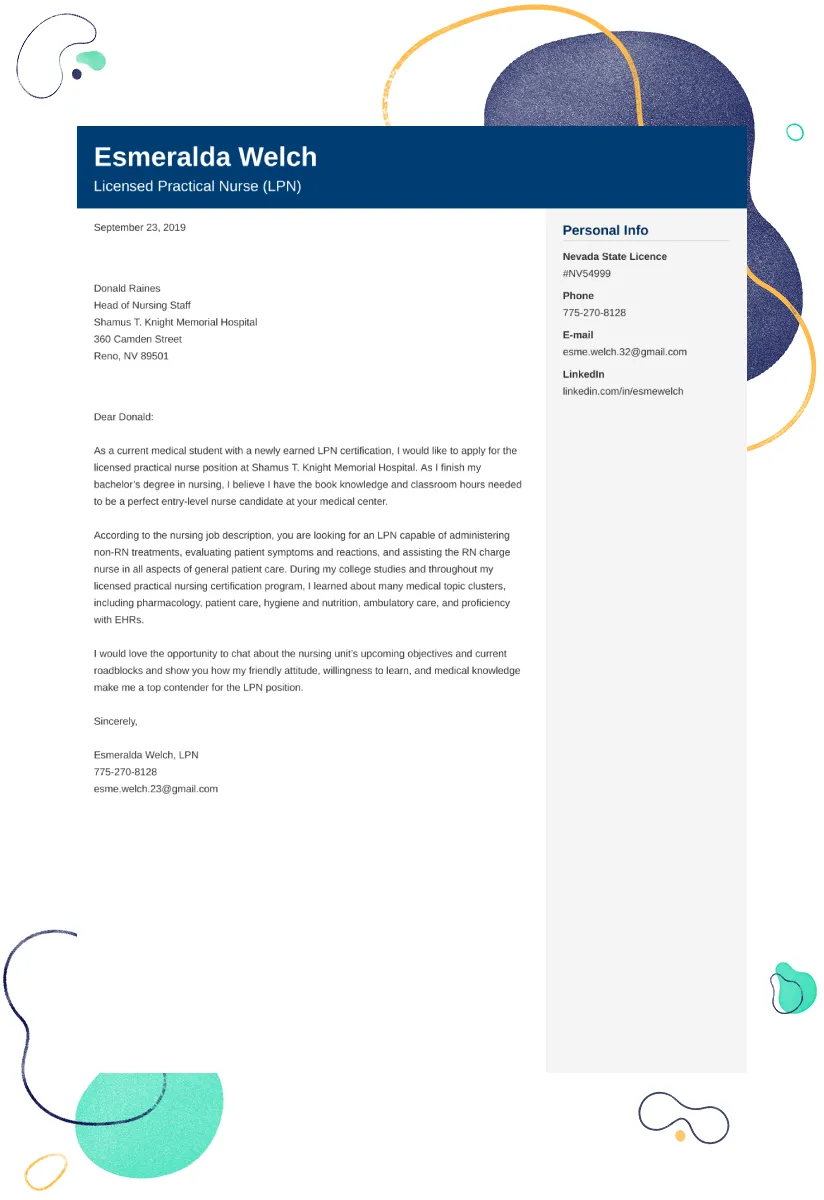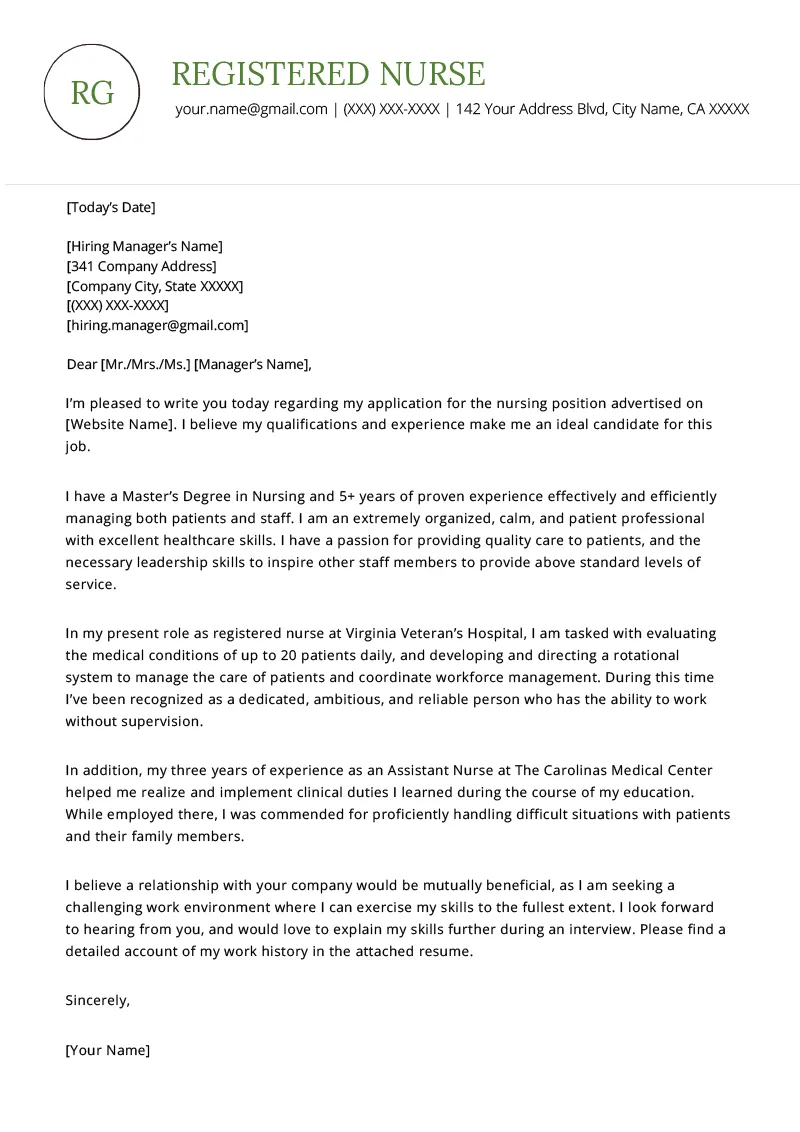A compelling cover letter is crucial for any nursing professional seeking a new role. It’s the first impression you make on a potential employer, setting the tone for your application and showcasing your suitability for the position. With the right approach, your cover letter can highlight your qualifications, experience, and passion for nursing, significantly increasing your chances of securing an interview. This guide provides top five tips on how to create outstanding nursing cover letter templates that will help you stand out from the competition, whether you are a seasoned nurse or just starting your career in the healthcare field. This is more than just a document; it is your professional story, so let’s create a cover letter that will get you noticed.
Crafting a Nursing Cover Letter
Begin your cover letter by addressing the hiring manager directly, if possible. Research the facility and find out the name of the person responsible for hiring. If not, use a professional greeting like “Dear Hiring Committee.” State the position you are applying for clearly and concisely. Briefly mention where you saw the job posting. Immediately capture the reader’s attention by stating your interest in the position and your qualifications. Highlight your passion for nursing and your understanding of the healthcare facility’s mission or values. This demonstrates your genuine interest and commitment. Keep the introduction brief, aiming to pique the reader’s curiosity about your skills and experience, compelling them to continue reading. The introduction sets the stage for the entire letter, ensuring you make a positive first impression.
Highlighting Your Nursing Skills
The body of your cover letter is where you showcase your skills and experience. Tailor your skills to match the job description. Review the requirements listed in the job posting and address each one directly. Provide specific examples of your skills. Instead of just stating that you have excellent communication skills, give an example of a time you effectively communicated with a patient or their family during a difficult situation. Mention any specialized skills or certifications you have, such as experience with specific medical equipment, electronic health record (EHR) systems, or advanced certifications like ACLS or BLS. Show how your skills align with the needs of the healthcare facility. Demonstrate a clear understanding of the facility’s patient population and the specific challenges and opportunities the role presents. This makes you more relatable and shows you are genuinely interested in the position, using the right keywords can help you get noticed.
Quantifying Your Achievements

Use numbers to demonstrate the impact of your work. Provide specific examples to illustrate your accomplishments. Don’t just say you improved patient outcomes; state by what percentage, or cite a specific reduction in complications. Use data to quantify your accomplishments. Instead of saying you managed a large patient load, mention the number of patients you cared for on average or the number of beds you were responsible for. Include metrics from previous roles. For example, if you implemented a new process that improved efficiency, state the percentage improvement or the time saved. Highlight any awards or recognition you’ve received, such as “Employee of the Month” awards or positive patient satisfaction scores. Numbers provide compelling evidence of your capabilities and make your achievements more tangible.
Tailoring Your Cover Letter
Customize your cover letter for each job application. Generic cover letters often fail to impress hiring managers, as they don’t demonstrate a genuine interest in the specific role or facility. Carefully read the job description and identify the key requirements and keywords. Use these keywords throughout your cover letter to show that you meet the employer’s needs. Research the healthcare facility. Learn about its mission, values, and any recent achievements or initiatives. Mention your understanding of the facility’s unique aspects, such as its patient population or specialized services, in your cover letter. This shows that you’ve done your homework and are genuinely interested in joining their team. Personalize the letter by mentioning how your skills and experience align with the facility’s specific needs. Show how you can contribute to their success and mission.
Formatting and Design
Use a professional and easy-to-read font, such as Times New Roman, Arial, or Calibri. Ensure your font size is between 10 and 12 points for readability. Maintain a consistent format throughout your cover letter. Use clear headings, bullet points, and ample white space to make the document easy to scan. Structure your letter logically with a clear introduction, body, and conclusion. Keep paragraphs concise and to the point. Make sure your cover letter is properly aligned and formatted consistently. Avoid using distracting colors, images, or excessive formatting, unless specifically requested by the employer. A clean and professional layout reflects your attention to detail and professionalism.
Proofreading and Editing

Thoroughly proofread your cover letter for any grammatical errors, spelling mistakes, or typos. Errors can undermine your credibility and professionalism. Use a grammar and spell-checking tool, but don’t rely on it entirely. Read your cover letter aloud to catch any awkward phrasing or sentences. Have someone else review your cover letter. Ask a colleague, friend, or career advisor to read your cover letter and provide feedback. They may catch errors you’ve missed and offer valuable suggestions. Ensure your contact information is accurate and up-to-date. Double-check your email address, phone number, and mailing address. Confirm that your cover letter is properly formatted before submitting. Poor formatting can make the cover letter difficult to read. Check the document on various devices to ensure it displays correctly on all platforms. Always keep a copy of your cover letter for your records, this will help you when you start a new job.
In conclusion, crafting a strong nursing cover letter is essential for showcasing your qualifications and securing your desired role. By following these five tips—crafting a compelling narrative, highlighting your skills, quantifying your achievements, tailoring your letter, and focusing on formatting and proofreading—you can significantly increase your chances of making a positive impression and advancing your nursing career. Remember that your cover letter is a dynamic document that should be updated to reflect your most recent accomplishments and experiences, as well as the specific requirements of each job you apply for. Use the nursing cover letter templates to your advantage and start crafting the cover letter that reflects your skills and get you the job of your dreams.
